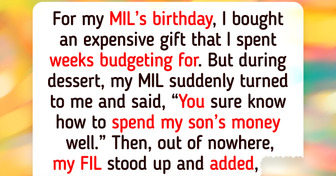12 People Who Were Even More Terrified After Discovering the TRUE Causes of Eerie Events

Hair loss is mostly associated with men, but in reality, more than 55% of women will experience some type of hair loss in their lives. In fact, about 40% of women will experience permanent hair loss in their lifetime. And while genetics can play a huge part in this, other times, it’s everyday habits that make your hair fall out. That’s why we’ve prepared a list of remedies that can help your hair follicles be healthy again.
In a study, researchers put green tea extract on participants’ scalps to see how it would help with hair regrowth. After 4 days, it was evident that their hair growth activity had increased by a lot. In addition to that, green tea also protects the skin of the scalp while improving the hair follicles. This is especially true for those who receive it through supplements, as they will see improved blood flow and oxygen levels.
Imagining the smell of this might seem unbearable, but it’s been proven that onions promote hair growth. It’s especially effective in patchy alopecia areata, a condition where one’s hair falls out in patches in different parts of the body. The way onion juice helps is by improving circulation on the scalp or any other body part. All you need to do is blend a couple of onions, squeeze out the juice, and apply it to your scalp for 15 minutes before washing it out with shampoo.
Egg yolks contain something called sulfur, which is vital for hair and its growth. While we still need some concrete evidence that egg yolks can promote hair growth, it doesn’t hurt to try a homemade mask. You can mix 2-3 egg yolks with 2–3 drops of lemon juice and apply the mask with your hands onto your scalp. You will need to wear a shower cap, then leave the mask on for 20 minutes before washing it away with cold or warm water.
Ginseng has many beneficial properties, including having a positive effect on hair growth by stimulating the hair follicles. There aren’t many studies out there at the moment, but one study from 2018 has shown great promise. The way you can consume ginseng is by taking it in supplement form. However, make sure to consult your doctor before taking any pills.
In a 2014 study, researchers gathered men that had a history of alopecia or male pattern baldness. Those who took 400 ml of pumpkin seed oil for 6 months had a 40% increase in hair growth count. On the other hand, those who took a placebo only had a 10% increase.
In order to apply it, you need to warm it a little bit and put it on your dry scalp by massaging it. Then you need to cover your head and leave the oil there for about 20 minutes. After you remove the covering, wash your hair as you normally would.
The flavonoids, phytoestrogens, and other essential oils that are present in licorice might prove to be helpful with hair growth. Since it’s hard to find licorice root, you can use tea and mix it with Indian gooseberry powder or henna to make a nice paste. Many people use these mixtures for various hair issues, including dull hair, dandruff, and split ends. However, before applying licorice straight to your scalp, it would be best to consult your doctor to check if it’s best for you.
Cayenne pepper is known to improve circulation, and that’s why it would be useful to try it against hair loss. You can mix it with some olive oil and make your very own oil, which you can apply the same way you would any other oil. However, make sure to leave the mixture to brew for 10–15 days before using it, and keep it away from sunlight. Alternatively, you can make a paste using the same ingredients and massage it onto your scalp.
This is not a very common ingredient, but a 2-year study found tremendous hair growth in men experiencing baldness. The participants took 320 mg of saw palmetto every single day for 2 years, and at the end of the study, they experienced significant hair growth. More specifically, they had new hair growing in the vertex, or the top and back of the scalp.
Have you ever struggled with hair loss, and if so, how did you handle the situation? Did you visit a doctor or try to treat the issue yourself?











